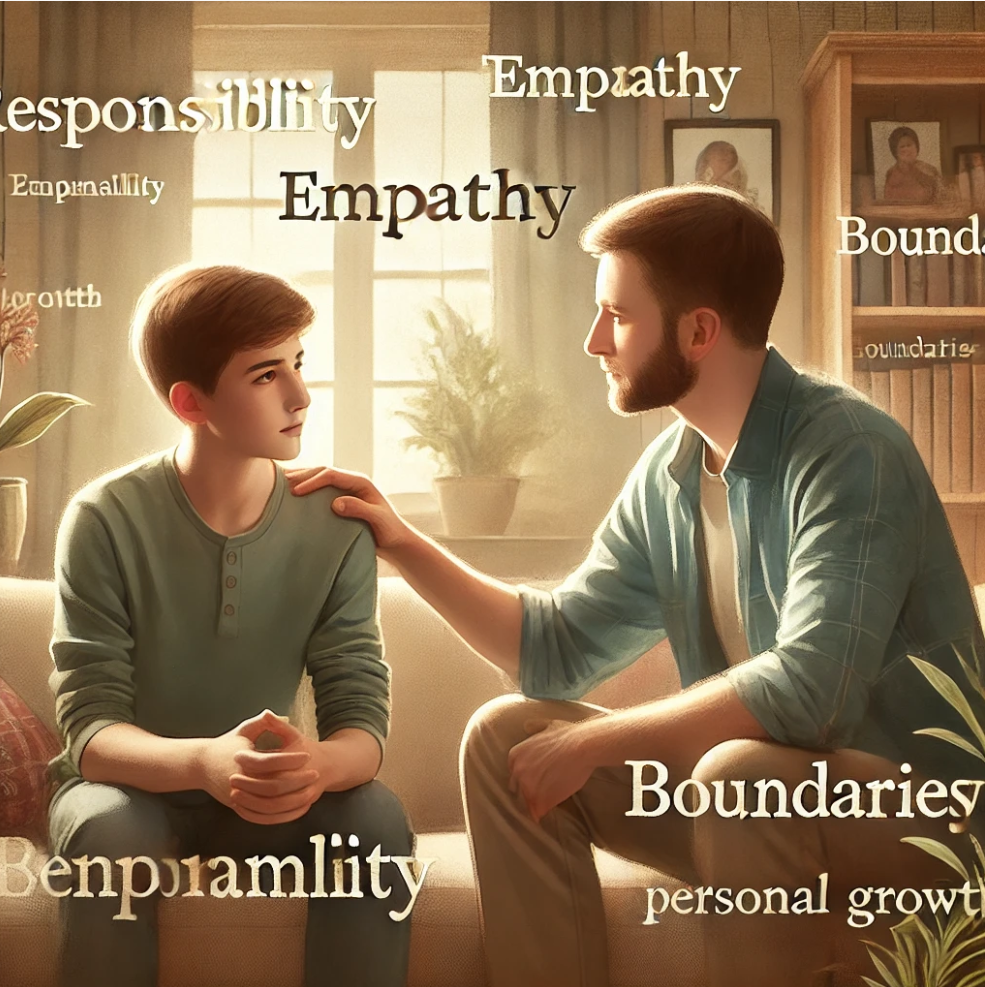Do I Act “Entitled”? A Teenager’s Perspective
In today’s world, the concept of “entitlement” is often associated with young people. But what does it really mean to be “entitled”? At its core, entitlement is a sense of deserving special treatment or privileges without necessarily earning them (Twenge & Campbell, 2009). While entitlement isn’t inherently bad, when unchecked, it can lead to negative behaviors and strained relationships. This article aims to help you, as a teenager, understand entitlement from your perspective and how it might impact your life.
What is Entitlement?
Entitlement is a mindset where people believe they deserve certain rights or privileges without putting in effort or showing gratitude. It’s like expecting a reward without doing the work or expecting things to go your way just because you want them to. Psychologists Dr. Jean Twenge and Dr. W. Keith Campbell define it as “a stable and pervasive sense that one deserves more and is entitled to more than others” (Twenge & Campbell, 2009). This can sometimes show up as expecting praise for things that should be standard or demanding special treatment in different situations.
Signs of Entitlement in Teenagers
According to psychologists, entitlement can sometimes develop naturally during teenage years as you seek more independence and explore self-identity (APA, 2013). Here are some common signs of entitlement to reflect on:
- Expecting Praise for Basic Responsibilities If you often expect praise for everyday responsibilities, like finishing your homework or chores, this might be a sign of entitlement. While appreciation is important, basic responsibilities are usually expected without special recognition.
- Demanding Special Treatment Entitlement can show up when you believe you should be treated differently just because of who you are. For instance, if you often feel frustrated when others don’t give you special privileges, it may be worth reflecting on why you feel that way.
- Ignoring Others’ Needs Entitlement can lead to a focus on one’s own needs while overlooking others. If you frequently expect your family or friends to go out of their way for you, without offering support in return, it might be a sign of an entitled attitude.
- 4. Struggling with Criticism or Rejection Those with entitled mindsets often have a hard time handling criticism or rejection. If you find yourself getting overly defensive or hurt when people offer constructive feedback, it could be a sign of entitlement.
Why Does Entitlement Happen?
Entitlement can sometimes be a byproduct of wanting to feel special or unique. During adolescence, as you figure out who you are, it’s normal to crave validation. However, the rise of social media can add pressure to appear “successful” or “popular,” which sometimes fuels entitled thinking (Kross & Verduyn, 2018). Additionally, cultural factors, like messages in media, often promote self-focus and immediate gratification, which can also impact how entitled we feel.
Family environment and upbringing also play a role. For example, when parents give constant praise without boundaries or shield children from any failure, it can lead to entitlement (Twenge & Campbell, 2009). This isn’t to say praise is harmful, but balance is key.
The Downsides of Entitlement
While a small amount of entitlement can build confidence, too much can create challenges. Research shows that entitled attitudes are linked to difficulty in relationships, dissatisfaction with life, and even increased mental health struggles, like depression and anxiety (Grubbs & Exline, 2016). When we expect too much from others, we risk pushing people away and experiencing disappointment when things don’t go our way.
Entitlement can also hinder personal growth. By always expecting others to meet your needs, you may miss out on learning resilience, empathy, and problem-solving skills, which are essential for navigating adulthood.
How to Recognize and Reduce Entitlement
1. Practice Gratitude One of the simplest ways to combat entitlement is to cultivate gratitude. Instead of focusing on what you lack or what you deserve, take time each day to recognize things you’re grateful for. Research shows that practicing gratitude can increase happiness and reduce feelings of entitlement (Emmons & McCullough, 2003).
2. Work on Self-Awareness Reflect on your actions and motives. Ask yourself, “Am I doing this because I feel I deserve special treatment, or am I genuinely interested in contributing?” By becoming more aware of your thoughts and actions, you can shift toward a more balanced perspective.
3. Learn to Accept Criticism Learning to accept constructive criticism is a valuable skill that helps build resilience. Instead of feeling hurt or defensive, try to see criticism as an opportunity to grow and improve.
4. Build Empathy Practice thinking about others’ perspectives and needs. Ask yourself how your actions impact others. Empathy helps build meaningful relationships and reduces entitlement by reminding you that others have their own needs and challenges.
5. Develop a Growth Mindset Dr. Carol Dweck’s research on growth mindset suggests that people who focus on growth over fixed achievements are more likely to be successful and satisfied in life (Dweck, 2006). By focusing on effort and improvement rather than expecting outcomes, you can shift away from entitlement.
Recognizing entitlement can be challenging, especially when society often reinforces a “me-first” mentality. However, by practicing gratitude, empathy, and self-awareness, you can avoid the pitfalls of entitlement and develop stronger, healthier relationships with those around you. Remember, the path to true confidence and self-worth doesn’t come from expecting special treatment but from treating others and yourself with respect and understanding.

This article has been written by John S. Collier, MSW, LCSW. Mr. Collier has over 25 years of experience in the social work field and is based in London Kentucky through Southeast Kentucky Behavioral Health, LLC. Mr. Collier may be reached by phone at (606) 657–0532 extension 101 or by email at john@sekybh.com.
References
- American Psychological Association. (2013). Developing Adolescents: A Reference for Professionals. American Psychological Association.
- Dweck, C. S. (2006). Mindset: The New Psychology of Success. Random House.
- Emmons, R. A., & McCullough, M. E. (2003). Counting blessings versus burdens: An experimental investigation of gratitude and subjective well-being in daily life. Journal of Personality and Social Psychology, 84(2), 377-389.
- Grubbs, J. B., & Exline, J. J. (2016). Trait entitlement as an emotion regulation strategy: A longitudinal study of its effects on perceived stress, depressive symptoms, and self-esteem. Journal of Research in Personality, 61, 27-34.
- Kross, E., & Verduyn, P. (2018). Social media and well-being: Pitfalls, progress, and next steps. Trends in Cognitive Sciences, 22(7), 558-560.
- Twenge, J. M., & Campbell, W. K. (2009). The Narcissism Epidemic: Living in the Age of Entitlement. Free Press.








